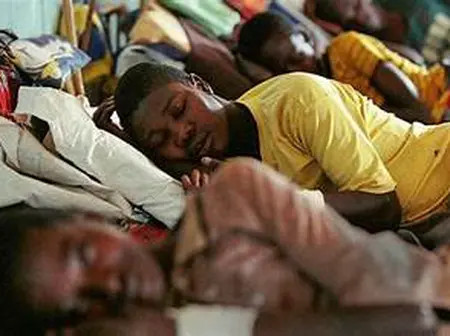Nairobi, Kenya: Kenya has officially eliminated human African trypanosomiasis (HAT), commonly known as sleeping sickness, as a public health problem. According to the World Health Organization (WHO), Kenya has become the tenth country in the world to achieve this milestone.
The announcement, made on 8 August 2025, marks a major victory in the country’s decades-long battle against the deadly parasitic disease.
It is the second Neglected Tropical Disease (NTD) Kenya has eliminated, following its certification as free of Guinea worm disease in 2018.
WHO Director General Dr. Tedros Adhanom Ghebreyesus congratulated the government and people of Kenya on this landmark achievement.
“Kenya joins the growing ranks of countries freeing their populations from human African trypanosomiasis. This is another step towards making Africa free of neglected tropical diseases,” said WHO Director General
HAT is a vector-borne disease caused by the parasite Trypanosoma brucei and transmitted through the bite of infected tsetse flies.
In Kenya, only the rhodesiense form (r-HAT) is found, a fast-progressing strain that can be fatal within weeks if left untreated.
The disease has historically threatened rural communities dependent on farming, fishing, animal husbandry, and hunting.
Kenya’s first reported cases date back to the early 20th century, with the last locally acquired infection recorded in 2009. Two additional cases exported from the Masai Mara National Reserve were detected in 2012.
“This validation marks a major public health milestone for Kenya, as we celebrate the elimination of a deadly disease in our country,” said Aden Duale, Cabinet Secretary for Health.
“The achievement will not only protect our people but also pave the way for renewed economic growth and prosperity,” said Duale.
Kenya’s success is credited to consistent surveillance, research, and vector control. In recent years, 12 health facilities in six historically endemic counties were equipped as sentinel sites, with advanced diagnostic tools and trained staff to detect and manage r-HAT cases.
The country has also strengthened tsetse fly monitoring and animal trypanosomiasis control, in collaboration with the Kenya Tsetse and Trypanosomiasis Eradication Council (KENTTEC) and veterinary health authorities.
“This key milestone reflects Kenya’s efforts and commitment over many years, as a collaboration between national and county governments, research institutions, development partners, and affected communities,” said Dr. Patrick Amoth, Director General for Health.
With WHO’s support, Kenya will now roll out a post-validation surveillance plan to guard against disease resurgence or reintroduction. This includes continued monitoring in previously affected areas and maintaining rapid treatment readiness with donated medicines from Bayer AG and Sanofi.
“This success was made possible by the Ministry of Health’s leadership, the dedication of health workers in high-risk areas, and the support from key partners,” said Dr. Abdourahmane Diallo, WHO Representative to Kenya.
Kenya joins nine other countries, including Benin, Chad, Côte d’Ivoire, Equatorial Guinea, Ghana, Guinea, Rwanda, Togo, and Uganda, in eliminating HAT as a public health problem. Globally, 57 countries have eliminated at least one NTD, underscoring steady progress in tackling some of the world’s most persistent health challenges.
“This is a proud moment for Kenya,” Duale noted, “but it is also a reminder that sustained vigilance is the price of lasting victory against disease.”

Leave a Reply